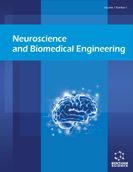Abstract
Effective diagnosis of Alzheimer’s disease (AD) and Mild Cognitive Impairment (MCI), a transitional state between normal and AD, is of great importance in dementia research. Different neuroimaging biomarkers for AD may be potentially different and complementary in the diagnosis of AD. It is necessary to combine multimodal neuroimaging biomarkers simultaneously for the higher classification accuracy and more effective diagnosis. In this study, Magnetic Resonance Imaging (MRI) and Fluorine-18 deoxyglucose (FDG) positron emission tomography (PET) were firstly analysed separately, then biomarkers from both MRI and FDG-PET were combined using logistic regression and fisher linear discrimination, widely used approaches to combine multiple variables for the simultaneous analysis. The results showed that MRI and FDG-PET biomarkers were all sensitive to the AD diagnosis, although some differences existed. Combining information from multiple brain regions or from multimodal neuroimaging data sets could increase the accuracy of distinguishing AD or MCI patients from NC group, instead of causing information redundancy.
Keywords: Alzheimer’s disease (AD), mild cognitive impairment (MCI), neuroimaging biomarker, MRI, FDG-PET.
Graphical Abstract
 7
7

